Why you can trust Tom's Hardware
Our HDR benchmarking uses Portrait Displays’ Calman software. To learn about our HDR testing, see our breakdown of how we test PC monitors.
The G25-10’s HDR support comes with a few caveats. You must use HDMI, and it won’t work with Adaptive-Sync. Gaming in HDR means accepting frame tears which you will see clearly at 144 Hz.
HDR Brightness and Contrast
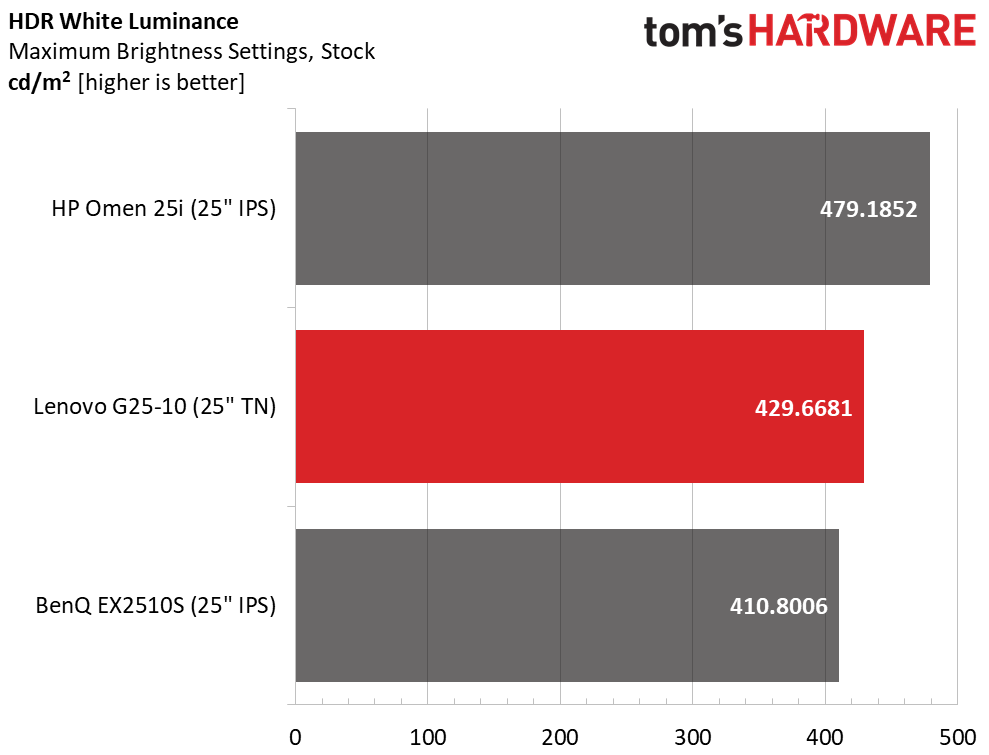
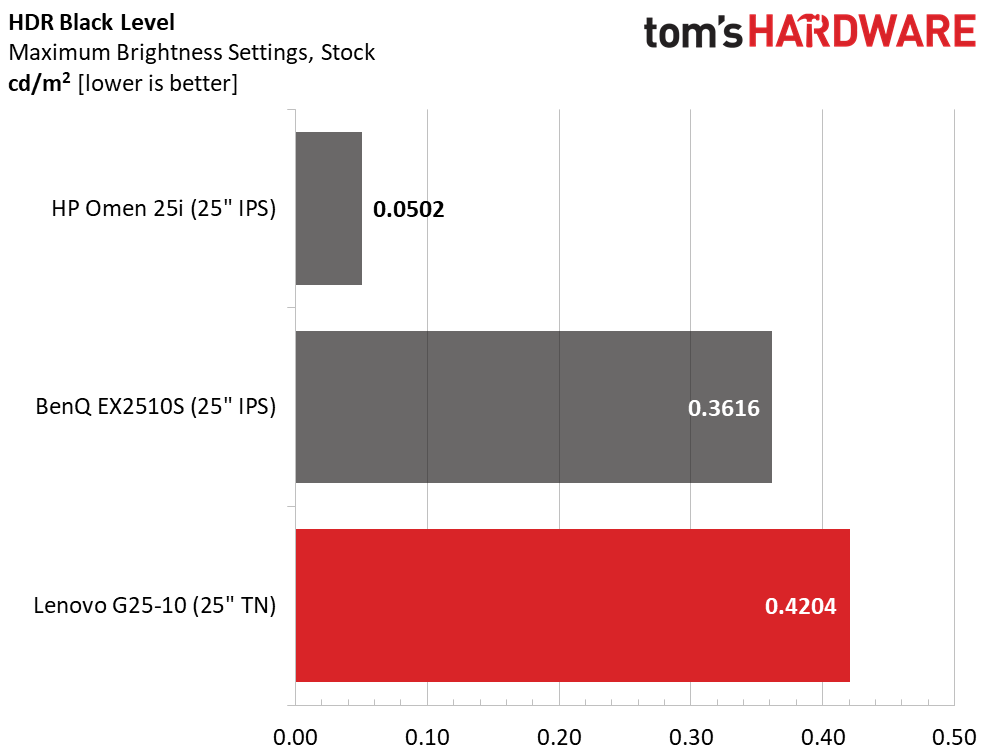
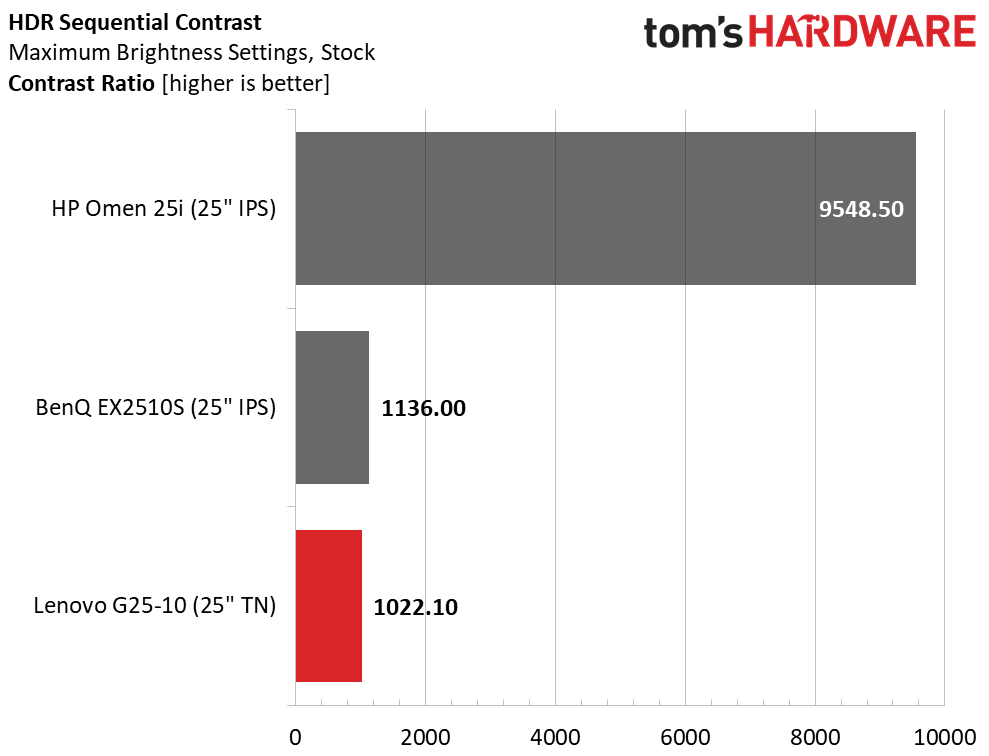
Only the Lenovo, HP and BenQ monitors support HDR, so we’ve left the other three screens out of this comparison. All three top 400 nits peak, with the HP leading the pack. The HP is the only monitor to offer dynamic contrast in HDR mode, which considerably lowers its black levels. The G25-10 and BenQ displays have the same contrast levels in HDR as they do in SDR. If HDR quality is a priority for you, the HP is the logical choice here.
Grayscale, EOTF and Color
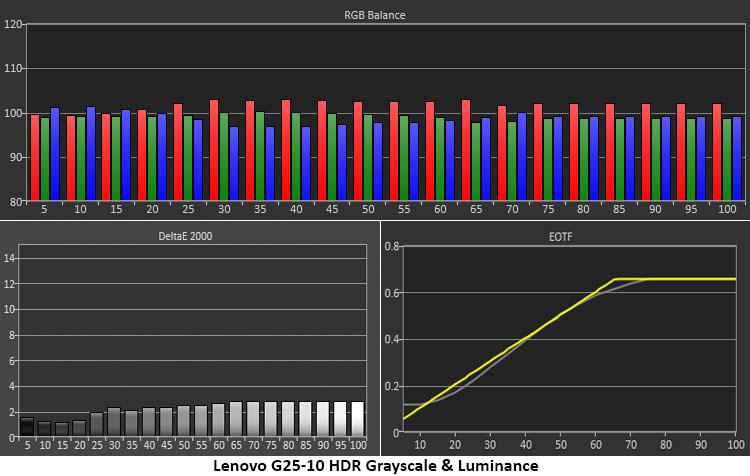
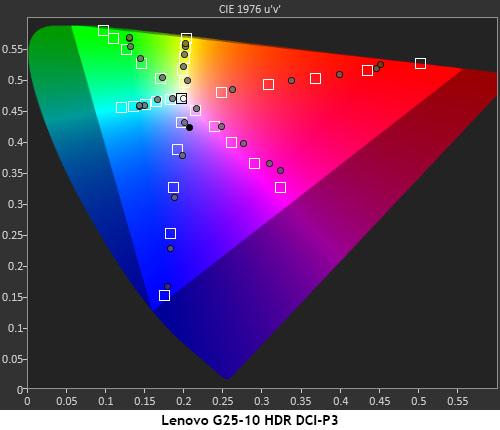
The G25-10 is just as color-accurate in HDR mode as it is for SDR content. Grayscale tracking is without visible errors, and the EOTF tracks close to the mark. Levels below 10% are too bright, making shadow detail easy to see and dark scenes more gray than black. The tone-map transition point is a bit more gradual than the spec, but overall luminance tracking is good enough to keep detail visible throughout the brightness range.
Since HDR content is typically mastered in the DCI-P3 color gamut, we measured against that standard. The G25-10 sticks to its native sRGB color space but tracks it with a bit of over-saturation. This renders more vibrant color in the mid-tones, which is a good thing. The brightest primary colors won’t pop like they will on a true wide-gamut display, but most HDR images will be a bit more saturated than their SDR counterparts.
Get Tom's Hardware's best news and in-depth reviews, straight to your inbox.

Christian Eberle is a Contributing Editor for Tom's Hardware US. He's a veteran reviewer of A/V equipment, specializing in monitors. Christian began his obsession with tech when he built his first PC in 1991, a 286 running DOS 3.0 at a blazing 12MHz. In 2006, he undertook training from the Imaging Science Foundation in video calibration and testing and thus started a passion for precise imaging that persists to this day. He is also a professional musician with a degree from the New England Conservatory as a classical bassoonist which he used to good effect as a performer with the West Point Army Band from 1987 to 2013. He enjoys watching movies and listening to high-end audio in his custom-built home theater and can be seen riding trails near his home on a race-ready ICE VTX recumbent trike. Christian enjoys the endless summer in Florida where he lives with his wife and Chihuahua and plays with orchestras around the state.